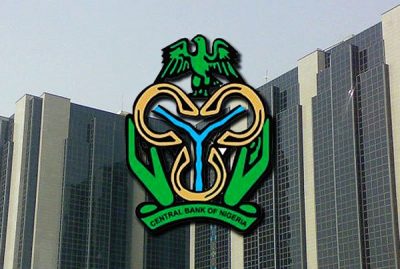Is the CBN really forcing Nigerian banks to lend?
In another desperate attempt to increase lending to the real sector, the Central Bank of Nigeria (CBN) came out with guidelines to mandate commercial banks to direct credit to real sectors of the economy particularly small and medium scale enterprises (SMEs).
The apex bank yesterday issued a letter to all banks on regulatory measures to improve lending to the real sectors of the economy. The guidelines specify that;
1. All Deposit Money Banks (DMBs) are required to maintain a minimum Loan to Deposit Ratio (LDR) of 60% by September 2019 and will be reviewed quarterly.
2. To encourage SMEs, Retail, Mortgage, and Consumer Lending, these sectors shall be assigned a weight of 150% in computing the LDR for this purpose. The CBN will provide a framework for classification of enterprises that fall under these categories.
3. The punitive measure to be employed to ensure that DMBs comply is a levy of additional Cash Reserve Requirement (CRR) equal to 50% of the lending shortfall of the target LDR.
While we are not completely sure of what the second point implies pending the release of the guidelines by CBN, latest Q1 numbers from the banks within our coverage show that affected banks will be Zenith Bank, Guaranty Trust Bank, FBNH, UBA and Stanbic IBTC.
However, this is assuming that loans and deposits figures have remained stagnant since Q1, which is highly unlikely. Guaranty Trust Bank, for instance, launched its retail loans attracting an interest rate of 1.75% monthly as against c.4% charged by consumer finance companies. This has gained widespread acceptance and we believe it would have helped increase loan growth for Guaranty by H1 2019.

This will result in an additional N1.4 trillion in loans to the N24.16 trillion within the private sector as at February 2019. Since many of the affected banks are the big banks, we believe the implication may not be as disastrous as would have been if smaller banks were the most affected considering many of the big banks have adequate capital and would typically have access to better quality loans.
Nevertheless, requesting banks to increase loans by 20% in a short period, will ultimately result in a buildup of NPLs. Also, a bank like FBNH with Capital Adequacy Ratio (CAR) of 16.5% as at Q1 2019 may fall below regulatory requirements if it must grow loans by 26% within 6 months.
That said, in our view, this move does not address the fundamental question of why commercial banks have abandoned their traditional role of financial intermediation- mobilizing deposits and granting loans to individuals and corporates and have rather concentrated on investing in government instruments.
The low-risk appetite among banks for lending to the real sector can be attributed to attractive yields on government instruments on the back of aggressive government borrowings to bridge fiscal deficits, high risk in the operating environment which has hindered the survival of SMEs, tepid demand from SMEs owing to the high cost of securing loans- brought about by the high-interest rate environment.
Consequently, DMBs have preferred investing a huge chunk of their liquid assets in government instruments given that they do not have Capital Adequacy Ratio (CAR) implications, are tax-free and do not result in Non-Performing Loans (NPLs).
We believe DMBs concentration in high-yield government instruments is a fallout of the structural imbalances in the broad economy and the attractive yields on money market instruments which is aimed at ensuring Nigeria’s risk-free assets remain attractive to foreign investors to attract dollar inflows, hence ensuring stability in the exchange rate.
If government continues to rely heavily on borrowings to bridge its fiscal deficits and the need to keep yields on government instruments attractive to FPIs remain a priority for the CBN, yields on government instruments will remain elevated, which would mean that DMBs investments will remain skewed towards those government instruments.
The Central Bank’s stringent Cash Reserve Requirements (CRR) also tightens banks’ liquidity, limiting their ability to lend.
Banks aversion to giving loans to the real sector has also intensified in the period of the recession and post the recession given the heightened risks involved.
Implications for the banks: Forcing banks to lend under the current macro-economic situation will only result in;
- A build up in NPLs given the sluggish growth in the economy and the high risk in the operating environment- this could pose a risk to financial stability.
- Apart from the fact that margins of banks may be squeezed if lending is redirected to the real sector, high NPLs will also directly affect the profitability of banks.
- Capital Adequacy Ratio implication: For banks that are already close to their regulatory minimum (10% for National banks, 15% for banks with International subsidiaries and 16% for SIBs- Not being enforced currently), aggressive loan growth will impact capital.
However, with a more favourable economic climate, better infrastructure that can aid the survival of SMEs, and less stringent CRR rules by the Central Bank, the new guidelines may well be a trigger to boost growth in the real economy.
(Nairametrics)


